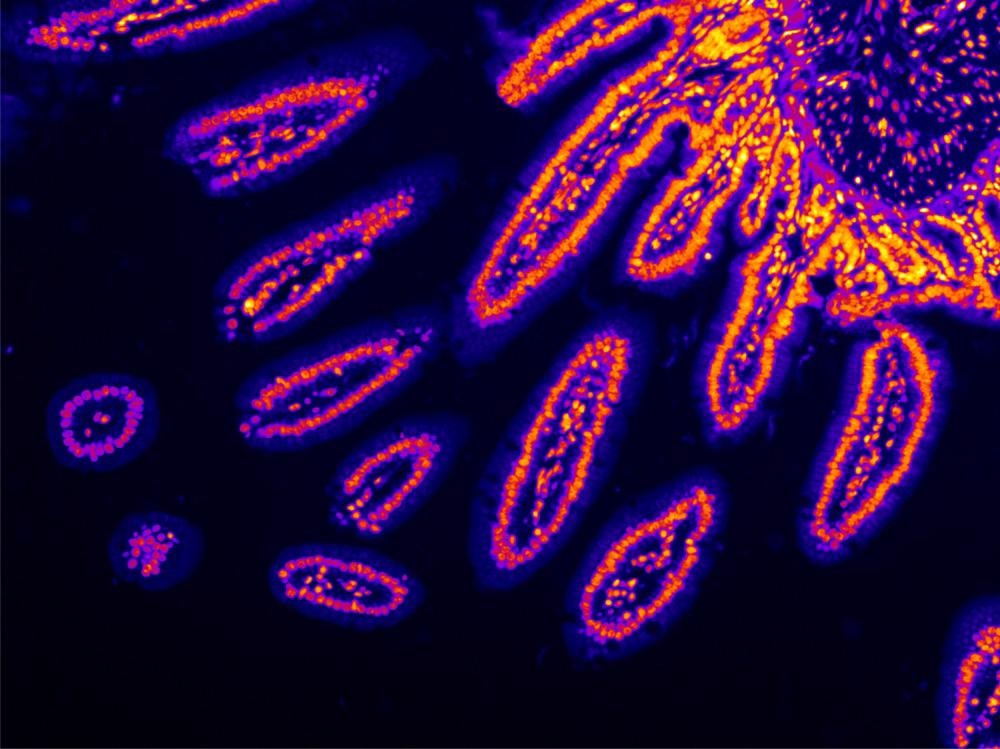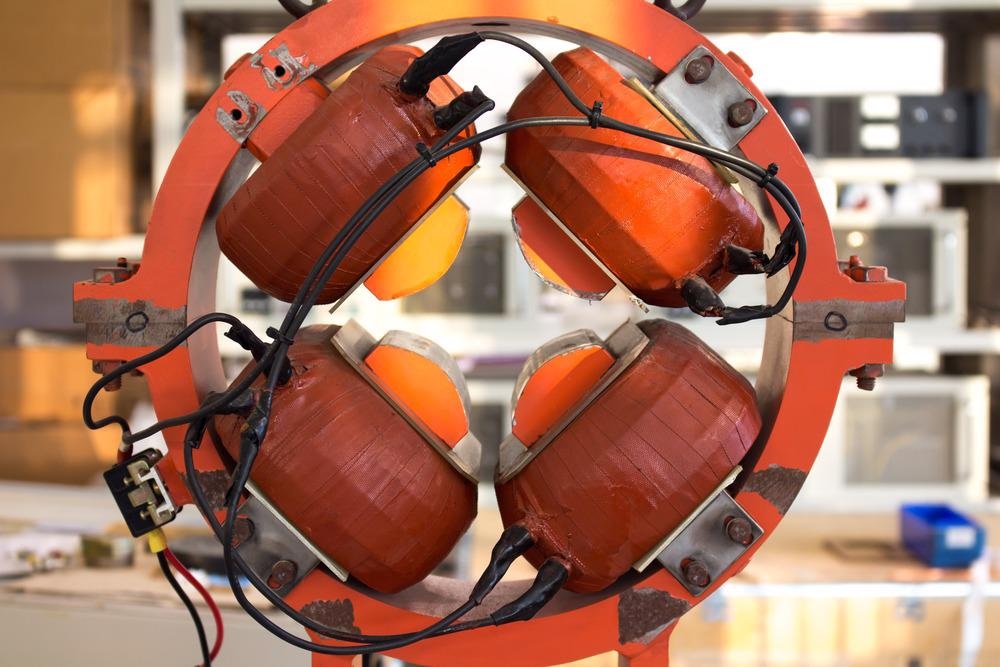Synchrotron-based X-ray fluorescence microscopy can provide spatial distribution and quantification of ions in samples ranging in length from mm to submicron. This allows for the creation of two-dimensional maps or three-dimensional ion volume reconstructions, which are ideal for studying ion distributions. This article will discuss the advantages, applications, and limitations of the use of Synchrotron-based X-ray fluorescence microscopy.

Image Credit: Virginie Thomas/Shutterstock.com
Introduction
A synchrotron is a circular particle accelerator. Charged particles (electrons) are accelerated through many magnets in the device until they exceed the speed of light. These particles produce a tremendously bright light known as synchrotron light when they travel at this speed. This light can be directed along beamlines, where it can be exploited in scientific experiments.
X-ray fluorescence technologies are typically used to determine the elemental composition of materials. The goal is to examine the fluorescence of X-ray light emitted by a sample after it has been excited by a primary X-ray source. When the first source strikes the sample, it interacts with the atoms by knocking electrons from their shells, creating a space that is filled with an electron from the same atom's higher outer shell.
The movement of an electron from a higher outer shell to a lower inner shell causes a drop in energy level, resulting in radiation that can be measured and mapped to an element.
The difference in Synchrotron-based X-ray fluorescence microscopy is in the primary source of light, which is the synchrotron. Light from other sources can produce photons similar to those produced by Synchrotron-based X-ray fluorescence microscopy, but the latter has many more advantages, including extreme brightness for faster analysis, monochromatic nature for more robust quantification, and the ability to be tuned for use with X-ray absorption spectroscopy.
Advantages of Synchrotron-Based X-ray Fluorescence Microscopy
Synchrotron-based X-ray fluorescence microscopy can provide spatial distribution and quantification of ions in samples ranging in length from mm to submicron. This allows for the creation of two-dimensional maps or three-dimensional ion volume reconstructions, which are ideal for studying ion distributions.
A study published in Nature Scientific Reports used Synchrotron-based X-ray fluorescence microscopy to visualize the distribution of ions (Potassium, Calcium, Manganese, Iron, and Zinc) during fungal decomposition of lignocellulosic material (wood) at multiple scales.
This process is critical for understanding plant pathology, which can aid in a better understanding of forest ecology and carbon sequestration, which may in turn aid in mitigating climate change. According to the visualizations, the fungus plays a significant role in wood decay by actively transporting ions into and controlling their distribution in decaying wood.
Synchrotron-based X-ray fluorescence microscopy is also useful for in vivo analysis that requires room temperatures and pressures or high detection limits of about 1-100mg/kg, or nanoscale resolutions of about 50nm. This makes it appropriate for a wide range of studies.
Applications Synchrotron-Based X-ray Fluorescence Microscopy
Investigating the toxic effects of metal(loid)s in agronomic plant species
Toxic metals such as Mn, Cu, Ni, and others can accumulate in plants and be toxic to both the plant and the animals that consume them. Through mapping the distribution of these ions in crops, synchrotron-based X-ray fluorescence microscopy can aid in the control of toxic compounds in edible portions of crops, as well as in determining risks and establishing regulations.

Synchrotron magnet quarter pole. Image Credit: qwertqwert/Shutterstock.com
Examining the Distribution of Nutrients in Food products
Synchrotron-based X-ray fluorescence microscopy can map the distribution of important ions in crops such as Fe and Zn that cause significant human dietary problems. This can aid in the design of biofortification strategies to improve crop nutritional value.
Understanding the Movement of Foliar Fertilizers
Foliar fertilizers are fertilizers that are applied directly to the leaves of plants to avoid the difficulties associated with applying fertilizers to the soil. Elemental analysis using Synchrotron-based X-ray fluorescence microscopy can aid in understanding the movement of these nutrients across leaf surfaces and their translocation through plants, which can then be used to determine optimal application strategies.
Investigating the Behavior of Engineered Nanoparticles
Because of their unique properties, nanoparticles (1-100nm in size) are increasingly being used in everyday consumer goods and drugs. Their effects can be improved by investigating their short- and long-term interactions with the substances with which they are combined using synchrotron-based X-ray fluorescence microscopy.
Studying the Unique Properties of Hyperaccumulating Plants
Hyperaccumulating plants can efficiently absorb toxic heavy metals from the soil. Synchrotron-based X-ray fluorescence microscopy allows for a better understanding of heavy metal regulation, rhizosphere uptake, and translocation mechanisms in these plants all of which are important in soil remediation.
Functional Characterization in Molecular Biology
The imaging capabilities of synchrotron-based X-ray fluorescence microscopy, when combined with genetic approaches, can aid in understanding gene and environmental interactions important for understanding genes that control elemental homeostasis.
Another study published in the journal Results in Chemistry examined elemental distribution and speciation in mangrove tree rings using Synchrotron-based X-ray microscopy. The study's findings pave the way for further investigation into which environmental or physiological factors cause tree-ring chemical speciation and distribution shifts in tree species.
Limitations of Synchrotron-based X-ray Fluorescence Microscopy
Despite their advantages, the widespread use of Synchrotron-based X-ray fluorescence microscopy is still limited by some factors.
Synchrotron-based X-ray fluorescence microscopy necessitates very large and sophisticated facilities that are not readily available to the public.
Sample preparation necessitates extensive technical knowledge and is delicate. As samples are not analyzed in their natural fluid states, sample preparation must be done with extreme caution to avoid experimental artifacts. Cryogenesis is frequently used as a preferred method for limiting sample damage.
The weight of elements influences the distribution of elements in samples. The depth at which lighter elements can be found influences sensitivity.
Conclusion and Future Perspectives
Synchrotron-based X-ray fluorescence microscopy is useful to study ionic processes at very small scales. It has several advantages that make it uniquely suited for a wide range of studies, but its use is limited by the requirement for very sophisticated facilities and highly specialized technical knowledge.
Despite these drawbacks, the method remains useful for revealing unique information on the distribution and quantification of ions that are helpful for understanding several important processes in living systems. Improving access to this technology will encourage its adoption in many more studies.
More from AZoM: Metrology in the Digital Era
References and Further Reading
Alves, E.E.N., Ortega Rodriguez, D.R., Rocha, P. de A., Vergütz, L., Santini Junior, L., Hesterberg, D., Pessenda, L.C.R., Tomazello-Filho, M., Costa, L.M. da. (2021). Synchrotron-based X-ray microscopy for assessing elements distribution and speciation in mangrove tree-rings. Results in Chemistry 3, pp.100121. https://doi.org/10.1016/j.rechem.2021.100121
Kirker, G., Zelinka, S., Gleber, S.-C., Vine, D., Finney, L., Chen, S., Hong, Y.P., Uyarte, O., Vogt, S., Jellison, J., Goodell, B., Jakes. J.E., (2017). Synchrotron-based X-ray fluorescence microscopy enables multiscale spatial visualization of ions involved in fungal lignocellulose deconstruction. Scientific Reports 7, pp.41798. https://doi.org/10.1038/srep41798
Kopittke, P.M., Punshon, T., Paterson, D.J., Tappero, R.V., Wang, P., Blamey, F.P.C., van der Ent, A., Lombi, E. (2018). Synchrotron-Based X-Ray Fluorescence Microscopy as a Technique for Imaging of Elements in Plants. Plant Physiology 178, pp.507–523. https://doi.org/10.1104/pp.18.00759
Disclaimer: The views expressed here are those of the author expressed in their private capacity and do not necessarily represent the views of AZoM.com Limited T/A AZoNetwork the owner and operator of this website. This disclaimer forms part of the Terms and conditions of use of this website.